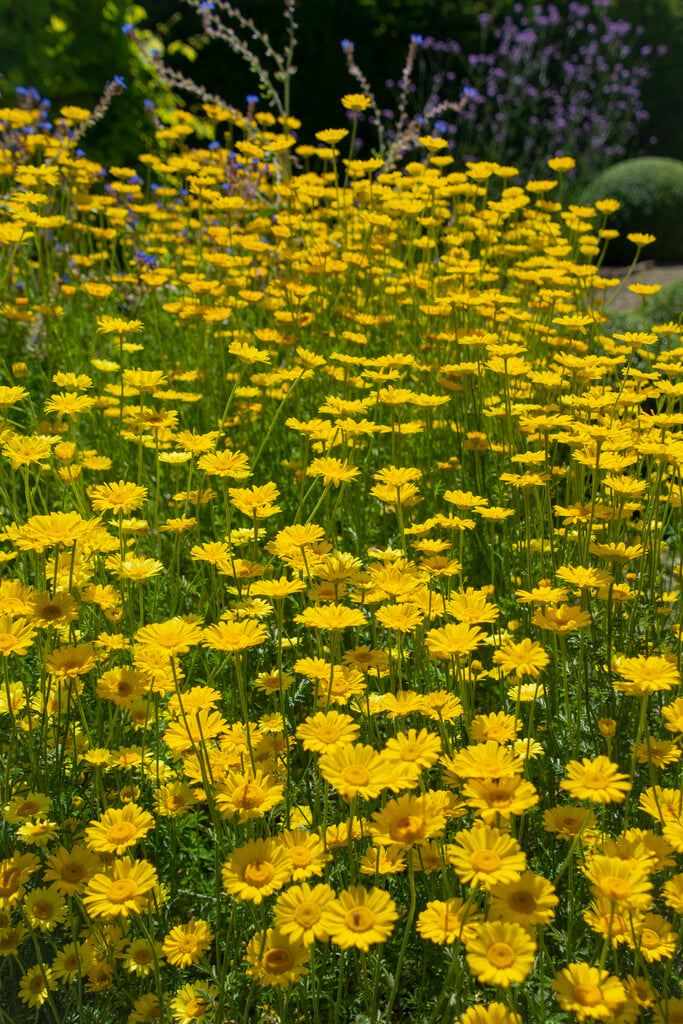Cota tinctoria
dyer's chamomile
A clump-forming perennial with finely divided leaves, mid-green above and downy-grey beneath. Plentiful golden yellow flowers are held on uprights stems in summer.
Synonyms
Anthemis tinctoriaSize
Ultimate height
0.5–1 metresTime to ultimate height
2–5 yearsUltimate spread
0.5–1 metresGrowing conditions
Moisture
Well–drainedpH
Acid, Alkaline, NeutralColour & scent
| Stem | Flower | Foliage | Fruit | |
| Spring | Green | |||
|---|---|---|---|---|
| Summer | Gold Yellow | Green | ||
| Autumn | Green | |||
| Winter |
Position
- Full sun
Aspect
South–facing or West–facing or East–facing
Exposure
Exposed or Sheltered Hardiness
H6Botanical details
- Family
- Asteraceae
- Native to GB / Ireland
- No
- Foliage
- Deciduous
- Habit
- Clump forming
- Genus
A genus of herbaceous chamomile, native to Europe, North Africa and South Western Asia. Plants have sunflower-like heads with white or yellow petals and yellow centres
- Name status
Correct
- Plant range
- Europe, Caucasus, Iran
How to grow
Cultivation
Grow in full sun in well-drained soil; it is drought-resistant and tolerant of poor soils
Propagation
Propagate by seed in pots in a cold frame in spring, by division in spring or root basal cuttings in late spring to early summer
Suggested planting locations and garden types
- Cottage and informal garden
- Mediterranean climate plants
- Banks and slopes
- Cut flowers
- Flower borders and beds
Pruning
Cut back hard after flowering to encourage basal growth that will overwinter
Pests
Diseases
May be susceptible to Powdery mildews
Get involved
The Royal Horticultural Society is the UK’s leading gardening charity. We aim to enrich everyone’s life through plants, and make the UK a greener and more beautiful place.
